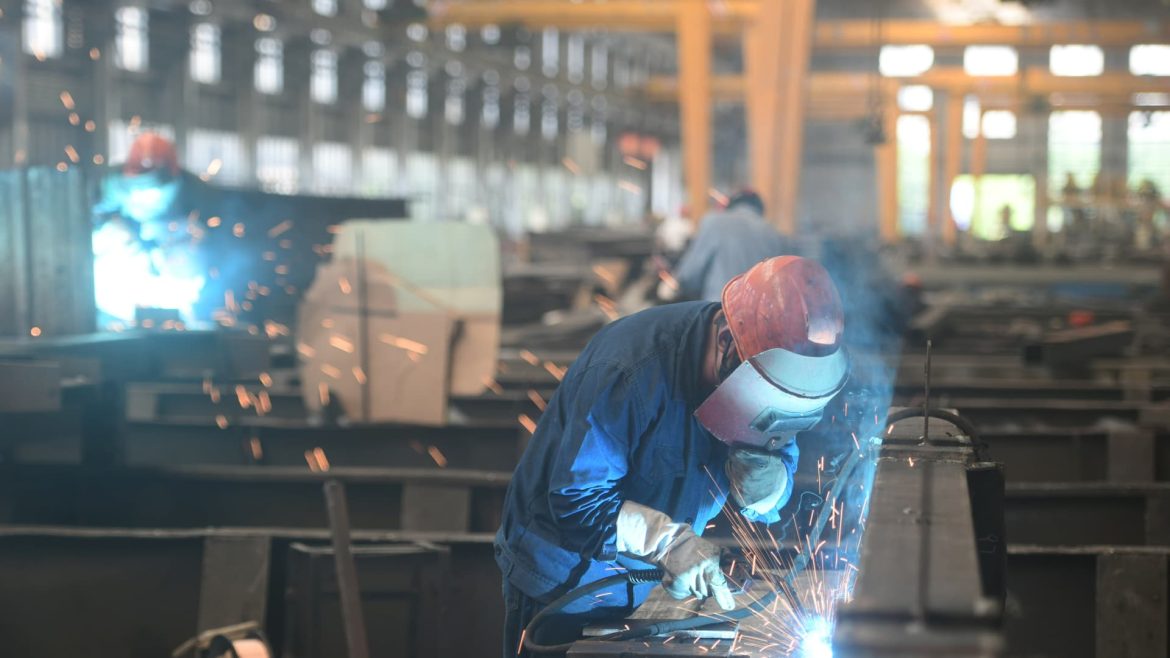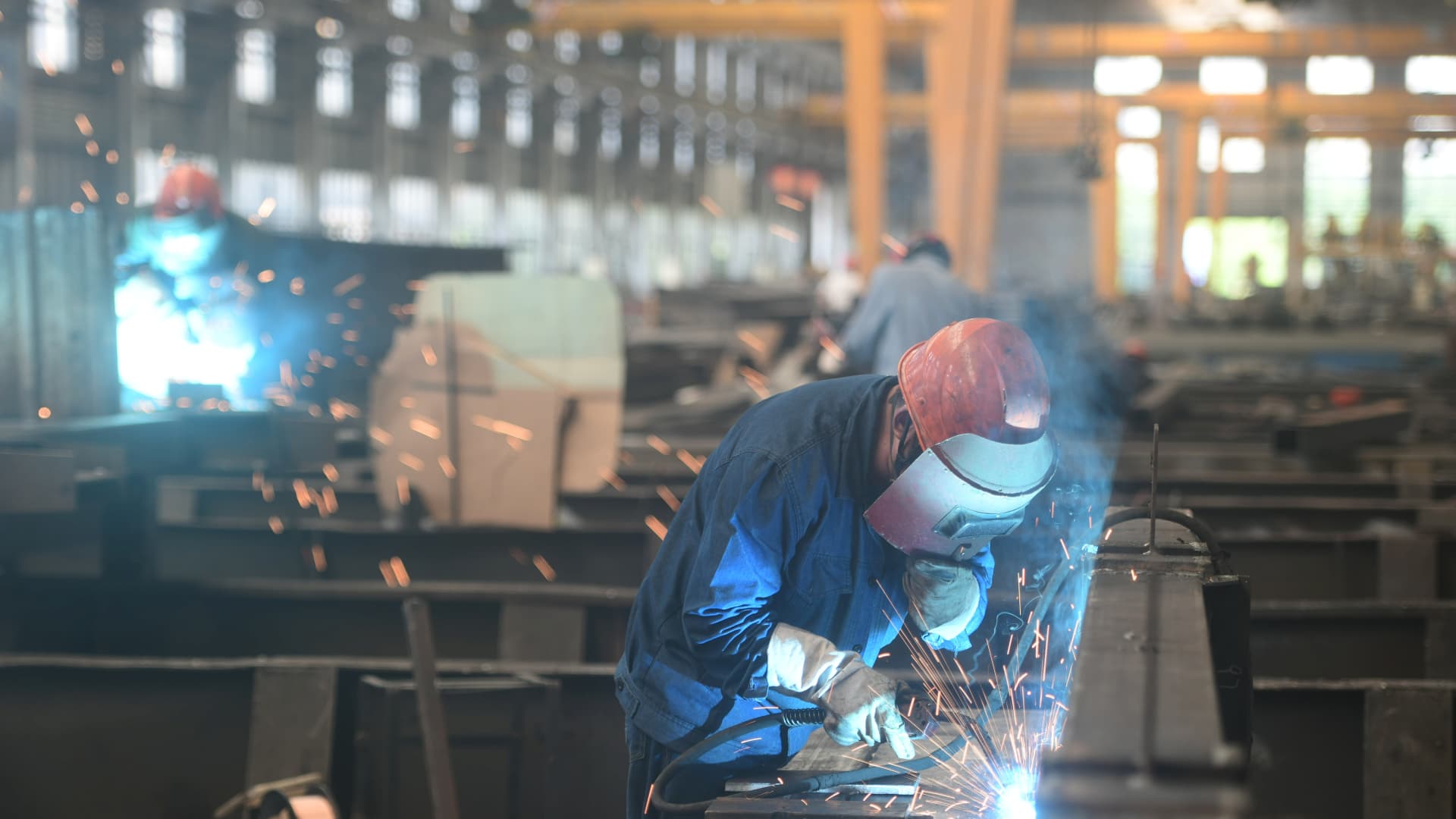China’s manufacturing sector in June 2023 presented a complex and nuanced picture, with diverging data from private surveys and official reports highlighting underlying tensions within the economy. This contrast underscores the challenges faced by China’s industrial landscape as it navigates trade disruptions, tariff pressures, and uneven domestic demand.
Private Survey Indicates Expansion Amid Export Growth
The private Caixin/S&P Global manufacturing Purchasing Managers’ Index (PMI) for June 2023 unexpectedly showed expansion in factory activity, posting a reading of 50.4. This figure is significant as it crosses the critical 50-point threshold that separates growth from contraction. The survey’s respondents, largely export-oriented manufacturers, reported an uptick in new orders that lifted production levels. This expansion suggests resilience in China’s export sector, buoyed partly by delayed tariff implementations and attempts to stabilize trade relations. The positive private PMI indicates that some manufacturers, particularly smaller and export-driven firms, have managed to capitalize on global demand despite a challenging trade environment. This growth was reported after a period of contraction revealed in earlier months, marking a tentative recovery.
The private PMI’s positive reading can be attributed to several factors. First, the delay in tariff increases provided some relief, allowing manufacturers to adjust their strategies and pricing. Second, the stabilization of trade relations with key partners may have contributed to increased export orders. Third, smaller firms’ agility and ability to adapt quickly to market changes may have given them an edge over larger, more bureaucratic enterprises. This resilience among private manufacturers is a positive sign, but it also raises questions about the broader economic dynamics at play.
Official Data Reflects Continued Contraction
In stark contrast, the official manufacturing PMI released during the same period indicated a third consecutive month of contraction in China’s factory activity. This official data paints a more cautious and somber view, reflecting broader challenges within the manufacturing sector, including weakening domestic consumption, supply chain bottlenecks, and ongoing uncertainties tied to global tariffs. The divergence between the official and private PMIs raises questions about the underlying economic dynamics. The official statistics tend to encompass larger, state-owned enterprises with broader industrial bases, which might be experiencing more severe headwinds from policy shifts, regulatory tightening, or shifting domestic priorities. Thus, the official PMI contraction aligns with a scenario where larger firms face slower activity, while smaller private firms see modest gains due to niche opportunities in exports.
The official PMI’s continued contraction suggests that the challenges faced by larger enterprises are more profound and persistent. These firms may be grappling with higher operational costs, slower innovation cycles, and exposure to domestic economic weaknesses such as sluggish consumer spending. The contrast between the official and private PMIs underscores the importance of considering both data sources when assessing the health of China’s manufacturing sector. While private manufacturers may be experiencing a tentative recovery, the broader industrial landscape remains fragile, with significant challenges ahead.
Tariff Impact and Trade Disruptions
A critical factor in this mixed scenario is the impact of US tariffs and the evolving trade tensions. Several reports indicated that tariffs had a pronounced dampening effect on factory activity as recently as May, contributing to the worst manufacturing slumps since 2022 according to private surveys. However, temporary tariff delays granted around June offered some relief, encouraging a slight rebound in exports and production among private manufacturers. This tariff dynamic directly affects supply chain decisions, pricing, and investment strategies, often hitting sectors with high external exposure hard. The delay in tariff increases allowed some reprieve and adjustment time, reflected more strongly in the private survey’s positive signals.
The impact of tariffs on China’s manufacturing sector cannot be overstated. Tariffs increase the cost of exports, making Chinese goods less competitive in international markets. This, in turn, can lead to reduced demand and lower production levels. The temporary delay in tariff increases provided a brief respite, allowing manufacturers to adjust their strategies and explore new markets. However, the long-term impact of tariffs remains a significant concern, as sustained trade tensions could hinder the sector’s growth prospects.
Variations Among Firm Sizes and Sectors
Analysis shows that smaller firms have seen relatively better performance amid these uncertainties compared to larger state-owned enterprises. Private sector surveys point to improved activity among these smaller manufacturers, potentially driven by flexibility, rapid adaptation to changing export demands, and niche market positions. Conversely, larger firms may be weighed down by legacy costs, slower innovation, and exposure to domestic economic weaknesses such as sluggish consumer spending. This divergence highlights the importance of firm size and sector in understanding the manufacturing landscape.
Smaller firms’ agility and ability to adapt quickly to market changes have given them an edge over larger enterprises. These firms can pivot their production lines, explore new markets, and adjust their pricing strategies more swiftly. In contrast, larger firms may be constrained by bureaucratic processes, higher operational costs, and slower decision-making cycles. This disparity underscores the need for targeted policies that support both small and large enterprises, ensuring a balanced and sustainable industrial recovery.
Domestic Demand and Property Market Influence
While export-oriented manufacturing showed some expansion, domestic consumption and investment remain more cautious. Reports indicate that retail sales growth accelerated briefly, partly due to holiday boosts, but analysts remain wary of sustained strength. Moreover, new home prices in China rose at their slowest pace in months, hinting at cooling in the real estate market, a traditionally significant driver for industrial activity. This environment suggests that while exports provide some manufacturing support, domestic demand remains a significant vulnerability.
The cooling of the real estate market has significant implications for China’s manufacturing sector. The property sector is a major driver of economic growth, contributing to demand for a wide range of industrial products. A slowdown in this sector can lead to reduced demand for manufacturing outputs, affecting production levels and employment. The tentative recovery in retail sales is a positive sign, but sustained growth in domestic consumption is crucial for a robust industrial revival.
A Cautious Outlook Amid Mixed Signals
The overall industrial scenario in China is characterized by cautious optimism from private sector metrics juxtaposed against a more conservative and contracting stance from official data. The rebound hinted at in June’s private surveys reflects pockets of resilience, particularly in export-driven private manufacturing, but the broader industrial landscape remains fragile. Policymakers face the challenge of balancing support for manufacturing recovery while addressing structural weaknesses such as uneven demand, geopolitical risks, and trade uncertainties. Sustained recovery may require measures that not only alleviate tariff impacts but also stimulate domestic consumption and investment.
The mixed signals from manufacturing activity raise critical questions for analysts and investors: Can export growth sustain wider industrial revival? Will domestic demand revive enough to offset headwinds? As China navigates these uncertainties, continuous monitoring of both private and official data will be essential to gauge the true trajectory of its manufacturing sector and broader economic health.
Conclusion: Navigating Transition and Uncertainty
China’s factory activity in June 2023 embodies an economy at a crossroads, facing conflicting forces. Private survey data shines a light on emerging strengths in export-driven manufacturing, suggesting adaptation and resilience among smaller firms. Meanwhile, official reports remind that contractionary pressures persist, especially among larger enterprises and sectors sensitive to trade disruptions. This divergence underscores the complexity of China’s economic environment during a period of significant global and domestic challenges. The path forward demands a nuanced understanding of these competing indicators, acknowledging that recovery is uneven and heavily contingent on trade dynamics, domestic reforms, and external geopolitical developments.
The mixed signals from manufacturing activity highlight the need for a balanced approach to economic policy. While export growth provides a glimmer of hope, sustained recovery will require addressing domestic demand weaknesses and structural vulnerabilities. Policymakers must navigate these challenges carefully, ensuring that support measures are targeted and effective. As China continues to adapt to a changing global economic landscape, the resilience and adaptability of its manufacturing sector will be crucial in determining its long-term economic prospects.





